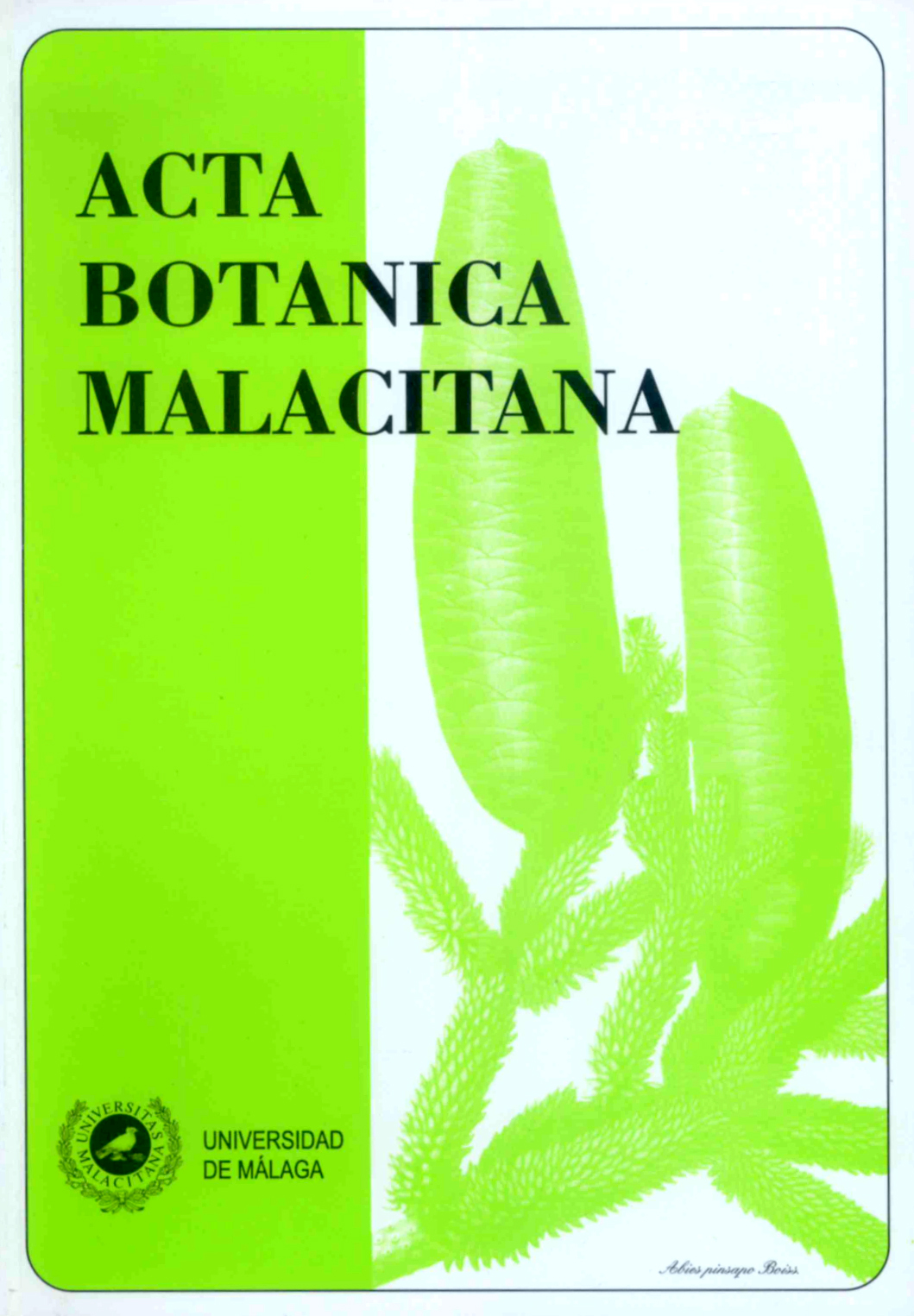Diversité floristique d’un lac du bas-sahara algérien. Flora diversity of a lake at algerian low-sahara
DOI:
https://doi.org/10.24310/abm.v37i0.2664Resumen
Français. Nous avons examiné la composition et la dynamique de la végétation vasculaire spontanée dans le Lac Ayata (Vallée d’Oued Righ, Bas-Sahara algérien). Le site se situe entre 33°29’17’’N à 33°29’48’’N et 05°59’10’’E à 05°59’37’’E. L’échantillonnage systématique de la flore a révélé l’existence de 13 espèces appartenant à 8 familles et 13 genres. Le plan d’eau est dépourvu de plantes submergées. Les types biologiques, la structure et la physionomie de la végétation sont été déterminés. L’occupation du sol par la végétation est cartographiée afin d’illustrer les répartitions saisonnières des espèces végétales dominantes. Des géostatistiques sur les surfaces occupées par la végétation ainsi que sur sa dynamique saisonnière sont ensuite obtenues puis discutées. Les types biologiques les plus fréquents sont les chamaephytes (53,8%) et les thérophytes (23,1%), qui caractérisent la végétation désertique ayant un recouvrement faible et une hauteur basse. Par ailleurs, la cartographie de la végétation a révélé l’existence de 3 types de formations végétales: (i) une végétation halophytique représentée par des espèces Chénopodiacées qui sont réparties tout autour des abords du plan d’eau; (ii) une végétation hydrophytique représentée par Phragmites communis et Juncus maritimus ; et (iii) une végétation éparse représentée par Limoniastrum guyonianum et Triganum nudatum. Le lac Ayata abrite une flore peu diversifiée mais bien adaptée aux conditions écologiques défavorables qui règnent sur le sol (salinité) et le climat (sécheresse).
English. We examined the composition and dynamics of spontaneous vascular vegetation in Lake Ayata (Valley of Oued Righ Algerian, Low-Sahara). The site is located between 33°29’17’’N to 33°29’48’’N and 05°59’10’’E to 05°59’37’’E. A systematic sampling of the flora has revealed 13 species belonging to 8 families and 13 genera. The waterbody is free of submerged plants. The plant life forms, structure and physiognomy of vegetation were determined. In addition, vegetation-land-cover was mapped to illustrate seasonal distribution of dominant plant species. Geostatistics on areas covered by vegetation and its seasonal dynamics were obtained and then discussed. The most common plant life forms were chamaephytes (53.8%) and therophytes (23.1%), which characterize desert vegetation that has low recovery and low height. Furthermore, vegetation mapping revealed the existence of 3 types of vegetation: (i) halophytic vegetation represented mainly by Chenopodiaceae species, which were extended all around the edges of the waterbody; (ii) hydrophytic vegetation represented mainly by Phragmites communis and Juncus maritimus, and (iii) sparse vegetation represented by Limoniastrum guyonianum and Triganum nudatum. Lake Ayata’s flora is poorly diversified but well adapted to adverse environmental conditions prevailing on the ground (salinity) and climate (drought).
Descargas
Métricas
Descargas
Publicado
Cómo citar
Número
Sección
Licencia
Toda la información relacionada con la licencia de uso de los trabajos publicados en Acta Botanica Malacitana y con los derechos de autor se pueden consultar en nuestra Política Editorial.








1.png)


